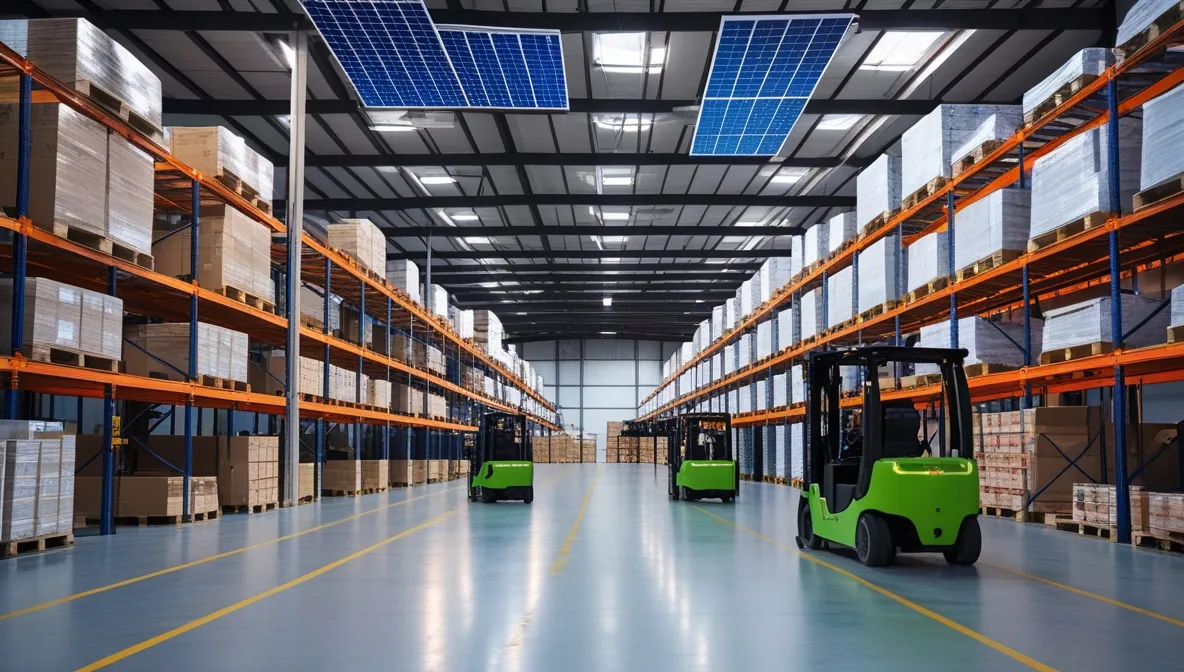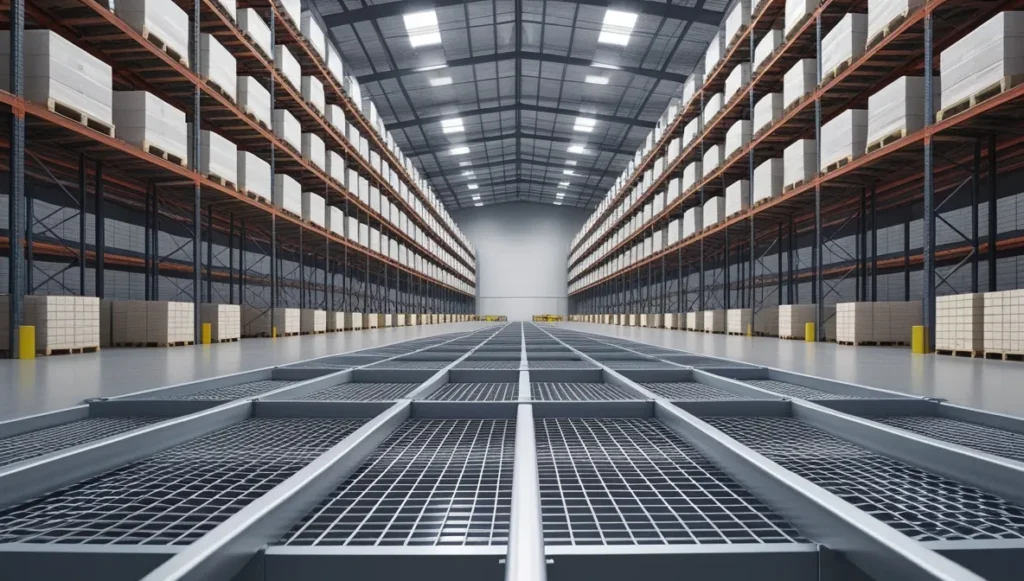📐 "First 50 Enterprise Queries Get Custom 3D Warehouse Design" Plan

In the ever-evolving world of logistics and supply chain management, warehouse space optimization has become a critical factor for businesses aiming to stay competitive. As we approach 2025, the demand for efficient storage solutions continues to grow, driven by e-commerce expansion, sustainability goals, and technological advancements. This comprehensive guide explores the latest strategies, tools, and trends to help businesses optimize their warehouse space, reduce costs, and enhance operational efficiency. Whether you’re managing a small distribution center or a large-scale fulfillment hub, this guide provides actionable insights to future-proof your warehouse operations.

Why Warehouse Space Optimization Matters in 2025
Warehouse space optimization is no longer just about stacking boxes higher or squeezing in more shelves. It’s a strategic approach to maximizing storage capacity, improving workflow efficiency, and reducing operational costs. In 2025, businesses will face increasing pressure to meet customer expectations for faster delivery times while minimizing their environmental footprint. Optimizing warehouse space allows companies to achieve these goals by:
- Reducing wasted space and improving storage density: By implementing advanced storage solutions like pallet racking systems and mezzanine floors, businesses can make the most of their available space.
- Enhancing inventory management and reducing stockouts: With tools like Warehouse Management Systems (WMS) and RFID technology, companies can track inventory in real-time and ensure optimal stock levels.
- Streamlining picking and packing processes for faster order fulfillment: Techniques like dynamic slotting and zone picking can significantly reduce the time it takes to process orders.
- Lowering energy consumption and promoting sustainability: Sustainable warehouse design, including LED lighting and solar panels, can reduce energy costs and support environmental goals.

Key Trends Shaping Warehouse Space Optimization in 2025
1. The Rise of Automation and Robotics
Automation is transforming warehouse operations, enabling businesses to optimize space and improve efficiency. Automated Storage and Retrieval Systems (AS/RS), autonomous mobile robots (AMRs), and conveyor systems are becoming increasingly common in modern warehouses. These technologies allow for vertical storage, dynamic slotting, and real-time inventory tracking, ensuring that every square foot of space is utilized effectively.
For example, companies like Amazon and Walmart are leveraging robotics to handle repetitive tasks such as picking and packing, freeing up human workers for more complex roles. In 2025, we expect to see even more widespread adoption of these technologies, particularly in high-density warehouses.
2. Smart Warehousing and IoT Integration
The Internet of Things (IoT) is revolutionizing warehouse management by providing real-time data on inventory levels, equipment performance, and environmental conditions. Smart sensors and RFID tags enable businesses to monitor stock movements, identify bottlenecks, and optimize space usage.
For instance, DHL has implemented IoT solutions to track the location and condition of goods in real-time, reducing the risk of lost or damaged inventory. In 2025, warehouses will rely on IoT-driven analytics to make data-driven decisions and improve overall efficiency.
3. Sustainable Warehouse Design
Sustainability is a top priority for businesses in 2025. Green warehouse design focuses on reducing energy consumption, minimizing waste, and using eco-friendly materials. Strategies such as solar panel installations, LED lighting, and energy-efficient HVAC systems not only lower operational costs but also contribute to a company’s environmental goals.
Companies like IKEA are leading the way in sustainable warehouse design, with facilities that generate their own renewable energy and use recycled materials. In 2025, we expect to see more businesses adopting these practices to meet regulatory requirements and consumer expectations.
4. Advanced Warehouse Management Systems (WMS)
Modern Warehouse Management Systems (WMS) are essential for space optimization. These software solutions provide tools for inventory tracking, demand forecasting, and layout planning. In 2025, WMS platforms will incorporate artificial intelligence (AI) and machine learning (ML) to predict storage needs and optimize space allocation dynamically.
For example, SAP EWM and Oracle WMS are already offering AI-driven features that help businesses optimize their warehouse layouts and improve efficiency. In the coming years, these systems will become even more sophisticated, enabling companies to stay ahead of the competition.

Strategies for Optimizing Warehouse Space in 2025
1. Vertical Storage Solutions
One of the most effective ways to maximize warehouse space is by utilizing vertical storage. Installing mezzanine floors, pallet racking systems, and cantilever shelves allows businesses to store more inventory without expanding their footprint. In 2025, automated vertical storage systems will become increasingly popular, enabling seamless access to high-level inventory.
For example, AutoStore is a leading provider of automated vertical storage solutions that can increase storage density by up to 400%. By adopting these technologies, businesses can significantly reduce their reliance on manual labor and improve efficiency.
2. Dynamic Slotting and Inventory Management
Dynamic slotting involves regularly reassigning storage locations based on product demand and seasonality. By placing high-turnover items in easily accessible areas, businesses can reduce picking times and improve efficiency. Advanced WMS platforms will play a crucial role in implementing dynamic slotting strategies in 2025.
For instance, Zebra Technologies offers a dynamic slotting solution that uses AI to analyze historical data and predict future demand. This allows businesses to optimize their storage layouts and reduce the time it takes to process orders.
3. Lean Warehousing Principles
Lean warehousing focuses on eliminating waste and improving efficiency. Techniques such as 5S methodology, just-in-time (JIT) inventory, and kaizen continuous improvement help businesses optimize space and streamline operations. In 2025, lean principles will be integrated with digital tools to achieve even greater efficiency.
For example, Toyota has successfully implemented lean warehousing principles in its distribution centers, reducing waste and improving productivity. By adopting these practices, businesses can achieve similar results and stay competitive in the coming years.
4. Cross-Docking and Flow-Through Warehousing
Cross-docking and flow-through warehousing minimize the need for long-term storage by transferring goods directly from inbound to outbound trucks. These strategies reduce storage costs and improve order fulfillment speed. In 2025, businesses will leverage advanced logistics software to implement cross-docking effectively.
For instance, FedEx uses cross-docking to streamline its operations and reduce the time it takes to deliver packages. By adopting these strategies, businesses can improve efficiency and reduce costs.
Tools and Technologies for Warehouse Space Optimization
1. Automated Storage and Retrieval Systems (AS/RS)
AS/RS solutions use robotics and conveyors to store and retrieve inventory automatically. These systems maximize vertical space and reduce labor costs, making them ideal for high-density warehouses.
For example, Dematic offers a range of AS/RS solutions that can be customized to meet the needs of any warehouse. By adopting these technologies, businesses can improve efficiency and reduce costs.
2. Warehouse Management Systems (WMS)
A robust WMS is essential for optimizing space and improving efficiency. In 2025, WMS platforms will incorporate AI and ML to provide predictive analytics and real-time optimization recommendations.
For instance, Manhattan Associates offers a WMS solution that uses AI to optimize warehouse layouts and improve efficiency. By adopting these technologies, businesses can stay ahead of the competition.
3. Robotics and Drones
Warehouse robots and drones are revolutionizing inventory management and space optimization. Robots can handle repetitive tasks such as picking and packing, while drones are used for inventory counting and surveillance.
For example, Locus Robotics offers a range of warehouse robots that can improve efficiency and reduce labor costs. By adopting these technologies, businesses can improve efficiency and reduce costs.
4. Augmented Reality (AR) for Layout Planning
AR tools allow warehouse managers to visualize and plan storage layouts in real-time. By simulating different configurations, businesses can identify the most space-efficient setup.
For instance, PTC offers an AR solution that can be used to optimize warehouse layouts and improve efficiency. By adopting these technologies, businesses can improve efficiency and reduce costs.
Challenges in Warehouse Space Optimization
1. Rising Real Estate Costs
As demand for warehouse space increases, so do real estate costs. Businesses must find innovative ways to maximize existing space rather than expanding their footprint.
2. Labor Shortages
The logistics industry is facing a labor shortage, making it difficult to staff warehouses. Automation and robotics can help mitigate this challenge by reducing reliance on manual labor.
3. Rapidly Changing Consumer Demands
E-commerce growth has led to fluctuating demand patterns, making it challenging to maintain optimal inventory levels. Advanced WMS platforms and dynamic slotting strategies can help businesses adapt to these changes.
Future-Proofing Your Warehouse for 2025 and Beyond
To stay ahead in 2025, businesses must embrace innovation, sustainability, and flexibility. Investing in automation, smart technologies, and lean principles will ensure that your warehouse is prepared for future challenges. Regularly reviewing and updating your space optimization strategies will help you maintain a competitive edge.
Conclusion
Warehouse space optimization is a critical component of successful logistics and supply chain management. As we approach 2025, businesses must adopt innovative strategies and technologies to maximize efficiency, reduce costs, and meet customer expectations. By leveraging automation, smart warehousing, and sustainable design, companies can future-proof their operations and thrive in an increasingly competitive market.

FAQs
1. What is the most effective way to utilize vertical space in a warehouse?
The most effective way to utilize vertical space is by installing pallet racking systems, mezzanine floors, and automated storage and retrieval systems (AS/RS).
2. How can automation improve warehouse space optimization?
Automation improves space optimization by enabling vertical storage, dynamic slotting, and real-time inventory tracking, reducing reliance on manual labor.
3. What role does IoT play in warehouse space optimization?
IoT provides real-time data on inventory levels, equipment performance, and environmental conditions, enabling businesses to make data-driven decisions and optimize space usage.
4. How can lean warehousing principles help optimize space?
Lean warehousing principles focus on eliminating waste and improving efficiency, helping businesses optimize space and streamline operations.
5. What are the benefits of cross-docking in warehouse management?
Cross-docking minimizes the need for long-term storage, reducing storage costs and improving order fulfillment speed.




